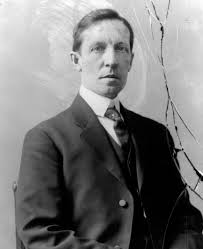 Born in Ontario, Canada, in 1862, Duncan Campbell Scott served most of his life working for the government as a civil servant but was also one of the country’s most respected and well-known poets. The son of a minister, he was interested in the arts very early on and quickly learned to play the piano, studied hard at school and wanted initially to go into medicine.
Born in Ontario, Canada, in 1862, Duncan Campbell Scott served most of his life working for the government as a civil servant but was also one of the country’s most respected and well-known poets. The son of a minister, he was interested in the arts very early on and quickly learned to play the piano, studied hard at school and wanted initially to go into medicine.
Unfortunately for Scott, the family were not well off and so it was decided that he would he go into the civil service, quickly finding a position in the branch that dealt with Indian Affairs. He would remain there for the remainder of his career, working his way up to the highest office available at the time, Deputy Superintendent.
It was there that Scott formed a longstanding friendship with Archibald Lampman and the two would go off into the wilds together on camping trips and exploring the Canadian wilderness. By the beginning of the 1890s, Scott was already writing poetry and submitting verses including At the Cedars to magazines in America such as Scribner’s.
Combining his love of the wilderness with his love of poetry, Scott completed his first full collection called The Magic House and Other Poems which was published in 1893 when he was just 21 years old. A year later he was married to Belle Botsford and they had one child, a daughter, who would tragically die in her teens.

Scott began diversifying from poetry and published a collection of stories under the title In the Village of Viger in 1896. He returned to poetry for his second collection, Labor and the Angel, two years later. His poetry works best when he is describing the Canadian wilderness and the lives of the indigenous people such as the Inuits and other aboriginal tribes.
His collections from The Magic House through to The Circle of Affection, which was published in 1947, show a willingness to experiment with style that set him apart from the rest of the Confederation Poets in Canada. By 1899, Scott had already been honored by being elected to the Royal Society of Canada and was given a number of awards for his contribution to the country’s literature.

Perhaps his biggest contribution in civil service was to work to amend the Indian Act that made it possible for all native children to attend school and get a solid education. Scott also believed that aboriginal children should go to residential schools which meant they would not be influenced by their indigenous culture, something that may well raise eyebrows if suggested today.
Whilst he is perhaps still best known for the work he did in connection to the Indian Affairs office, Scott is rightly seen as one of Canada’s major poets. His last poetry collection was published after he retired in 1935 and was called The Green Cloister: Later Poems and was a poetic travelogue of the areas he and his wife had visited in Europe over the years. Scott died in 1947 at the age of 85 and was buried at Beechwood Cemetery in his home city of Ottawa.

